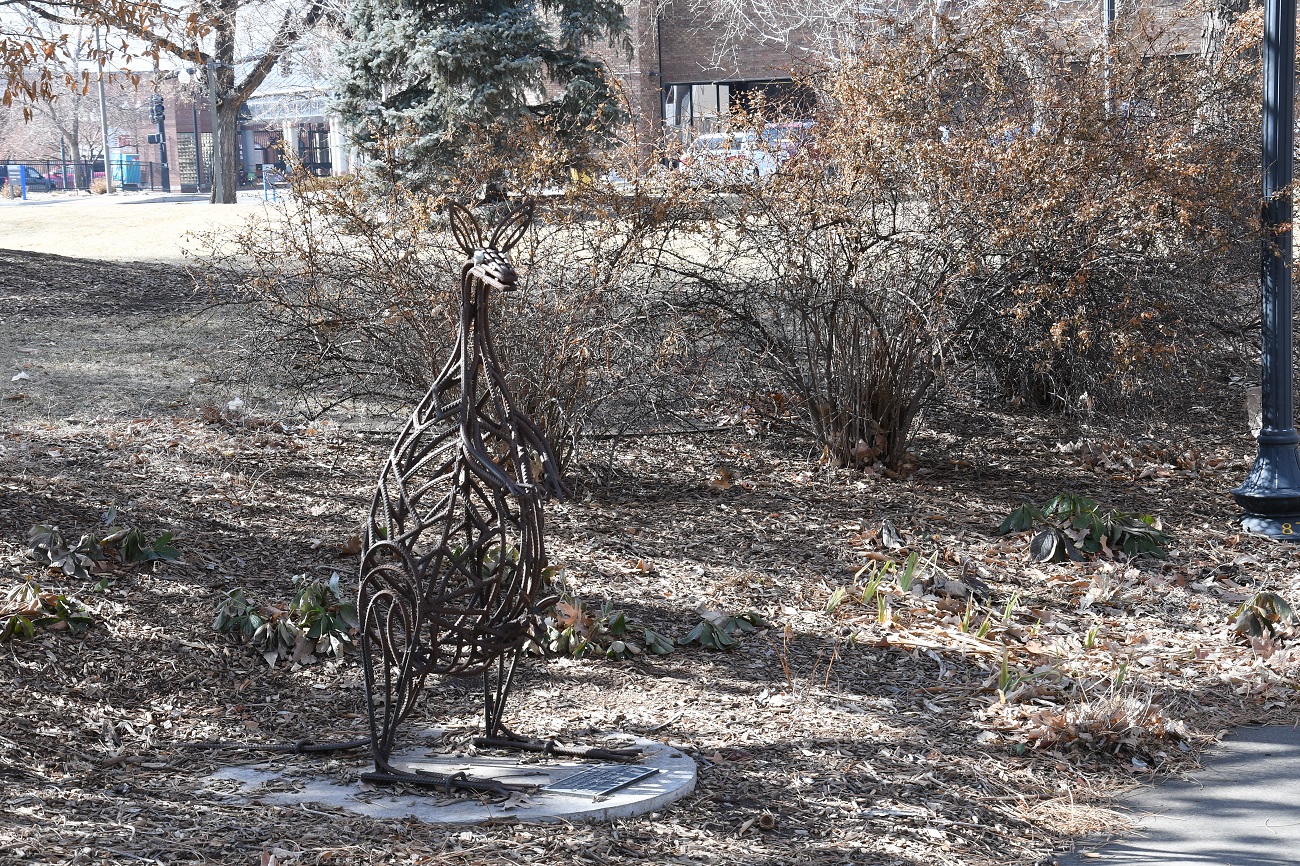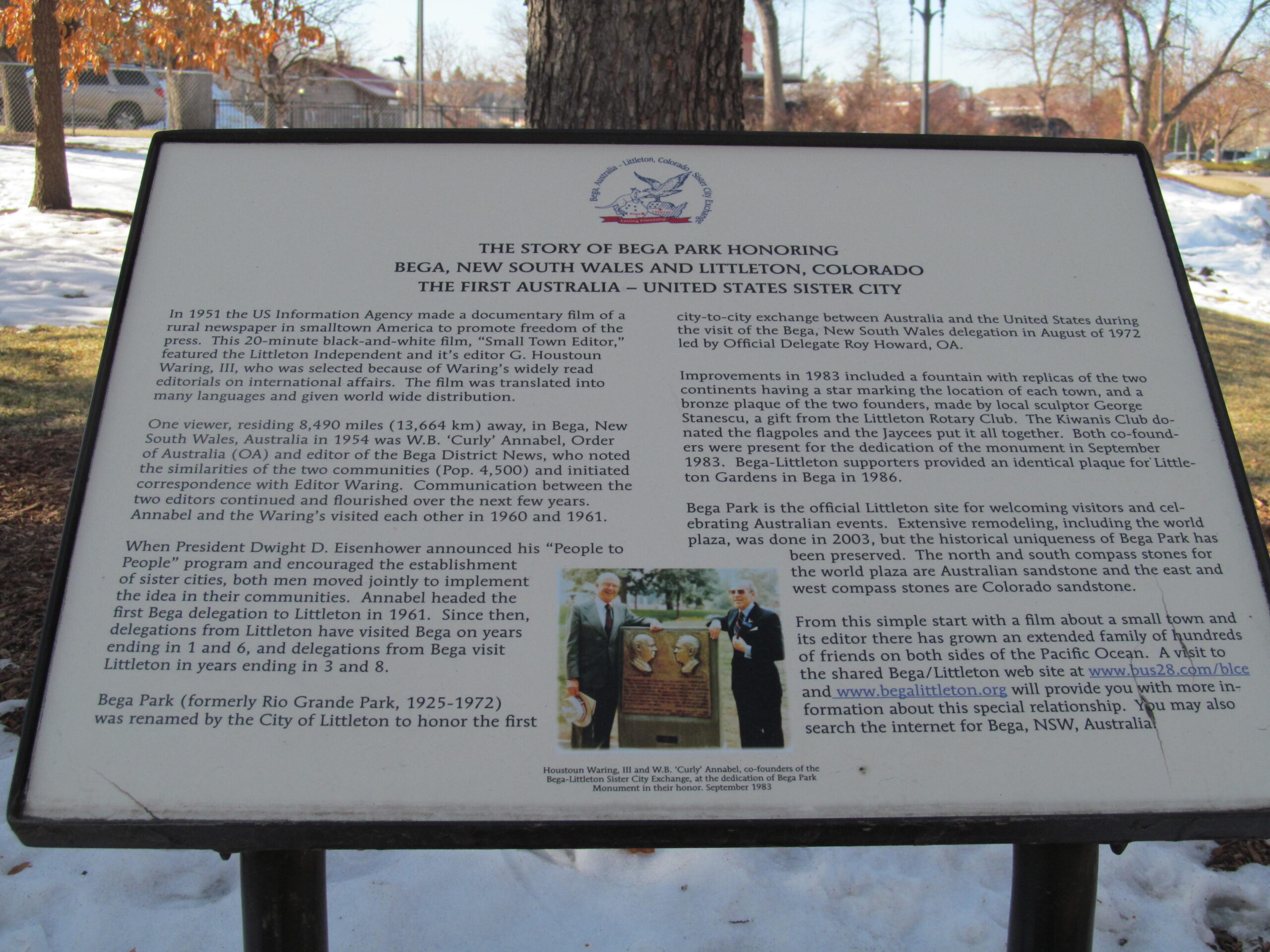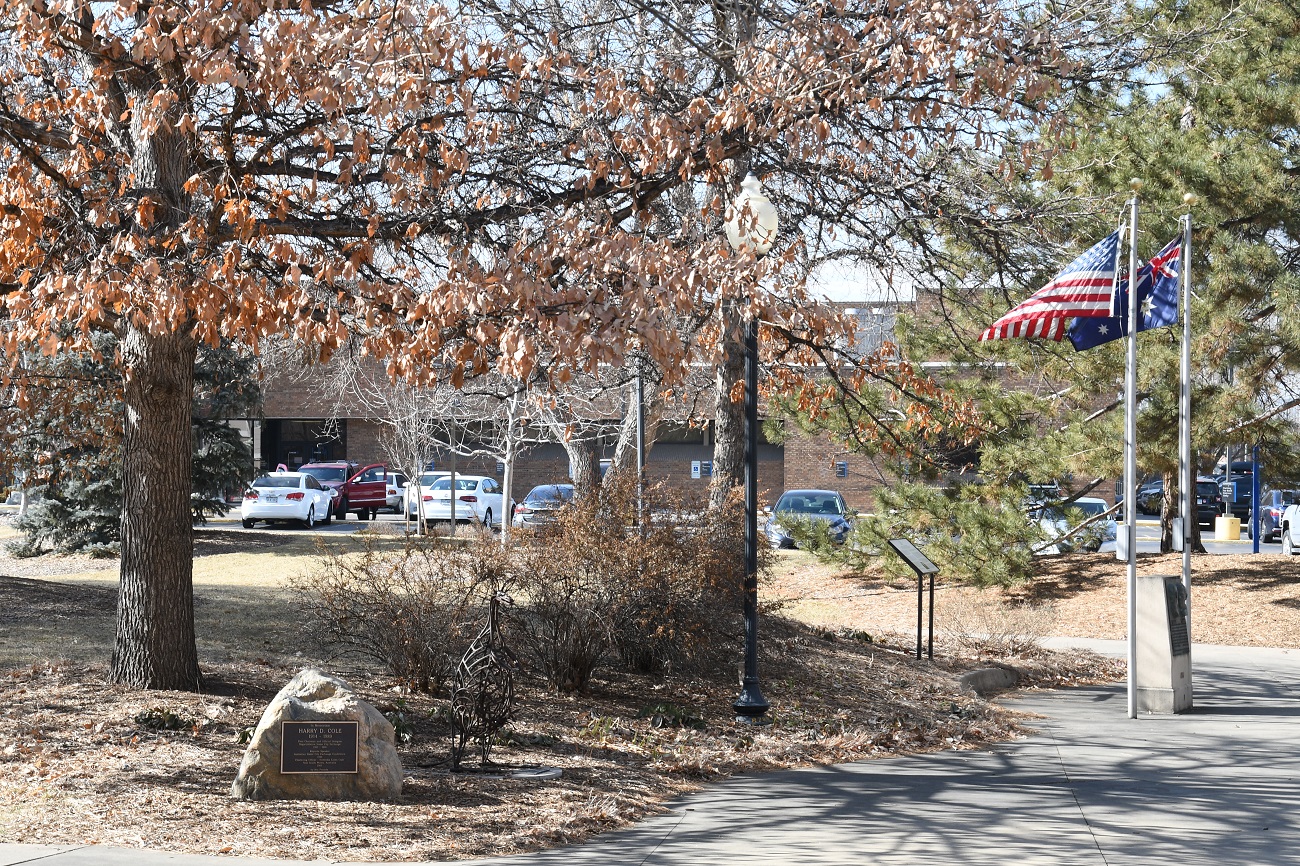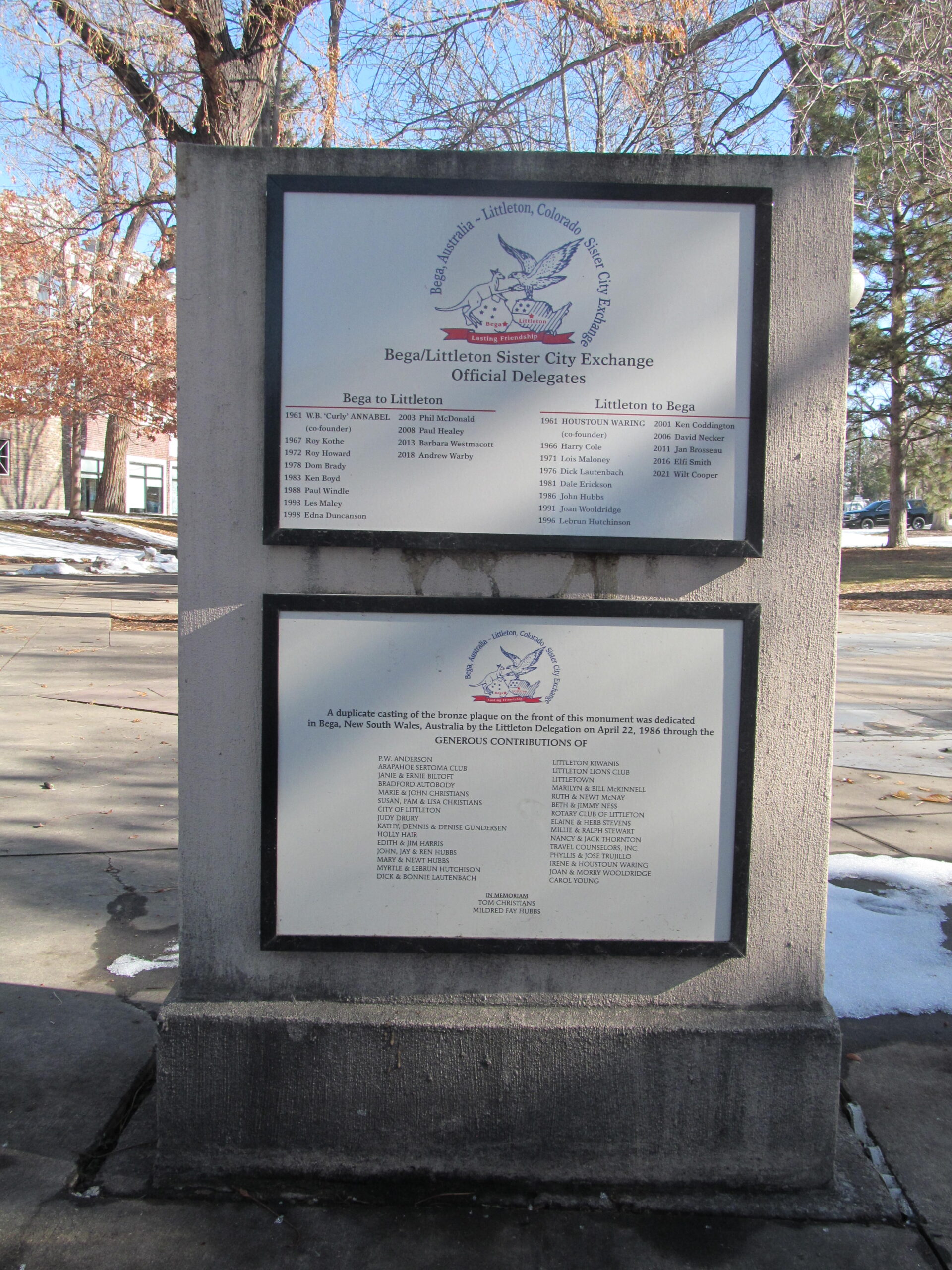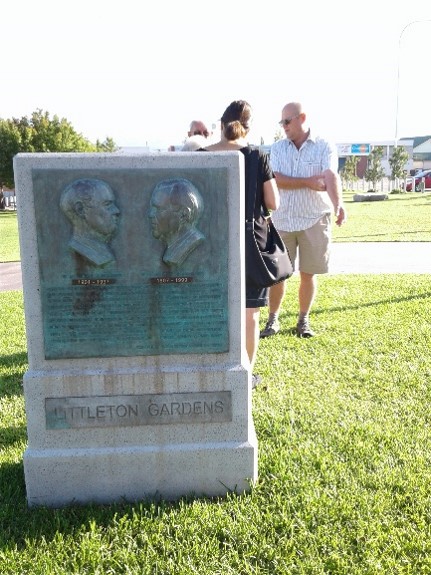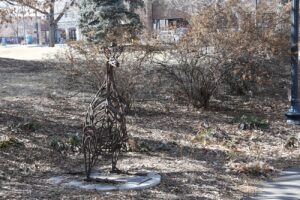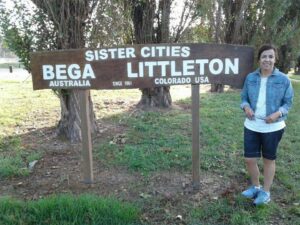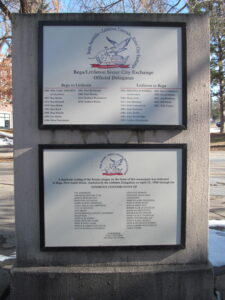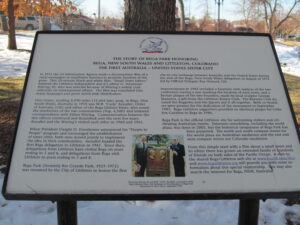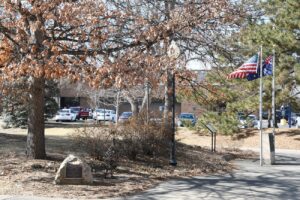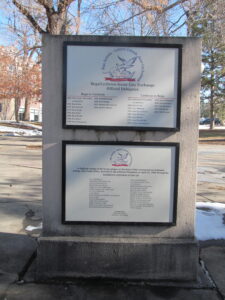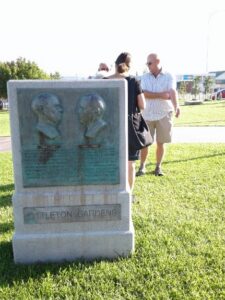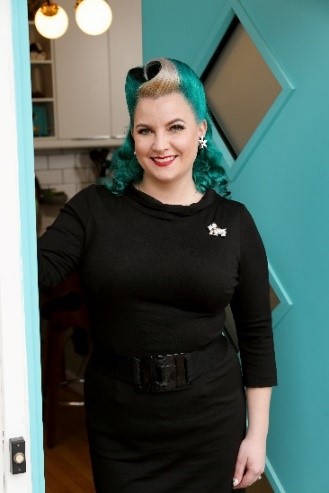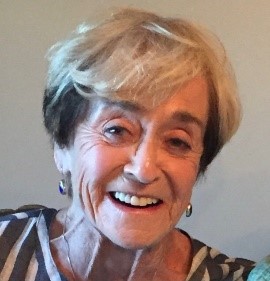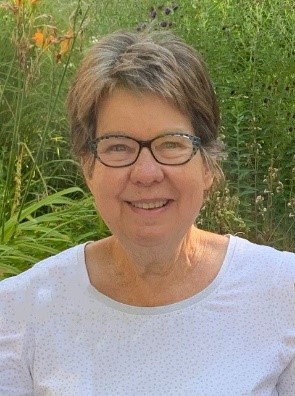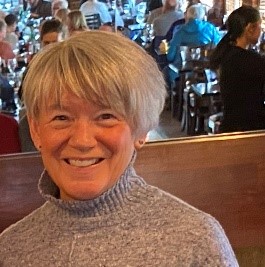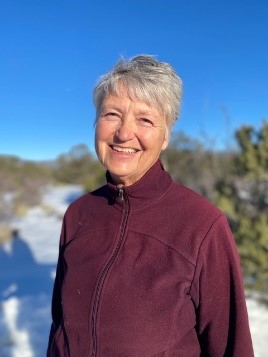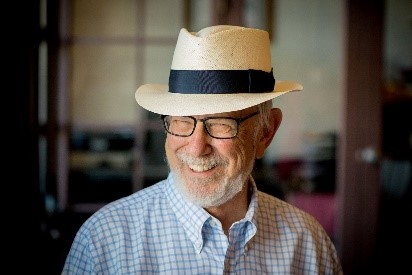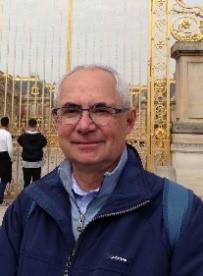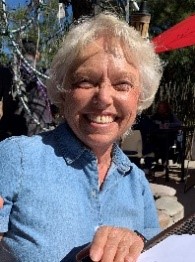In 1895, the City established Rio Grande Park on a corner just west of the railroad tracks and Main Street. In 1925, Littleton began leasing the land from the Denver & Rio Grande Railroad and the park was turned into a playground with the cooperation from the railroad, the Littleton Town Council, and the Women’s Civic Study Club. In 1948, the Council hired S.A. DeBoer, a prominent Dutch landscape architect and the official landscape architect of Denver from 1910–1931, to prepare a park landscape plan to be implemented when funds became available. DeBoer envisioned the park as a civic center connecting the Courthouse and the Denver & Rio Grande Depot. As newsman Houston Waring noted, a new Town Council was elected shortly after the design was announced and the plans were filed away.
In 1961, Littleton became a sister city to Bega, New South Wales, Australia, when Houston Waring became friends with a Bega newspaper editor, Curly Annabel.
Littleton change the name of Rio Grande Park to Bega Park. Bega, in turn, created Littleton Gardens in their city. Bega Park was redeveloped and featured a fountain designed by James Mann as the centerpiece. The fountain depicted the United States, Pacific Ocean, and Australia, with bronze stars depicting Littleton and Bega; the fountain has since been replaced with a map. The City obtained a large granite block obtained from Tarraganda, Australia, fashioned it into a goodwill symbol, and erected it as a monument in 1975. The monument sat near a fountain (since removed) next to the gardens.
The two cities each have identical plaques showing the profiles of Waring and Annabel by artist Georg Stanescu. Littleton dedicated its plaque in 1983 and presented a duplicate to Bega in 1986. Today, Bega Park hosts events and concerts, and provides a shady respite on hot days.
Bega Park was incorporated into the Littleton Downtown Historic District as a contributing building on October 26, 2021.
For more details, see:

